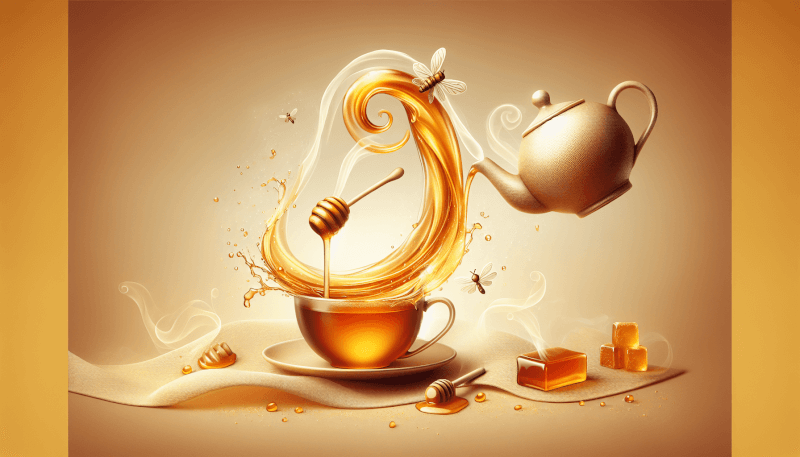Imagine sipping on a warm cup of tea that is both delicately flavored and naturally sweet. Sounds divine, doesn’t it? Well, if you’re a tea lover looking for a healthier alternative to sugar, brewing your cuppa with honey might be just the solution. In this article, we’ll guide you through some helpful tips and techniques to achieve that perfect balance of flavors when brewing tea with honey. So grab your favorite teapot and get ready to elevate your tea-drinking experience to a whole new level of sweetness.
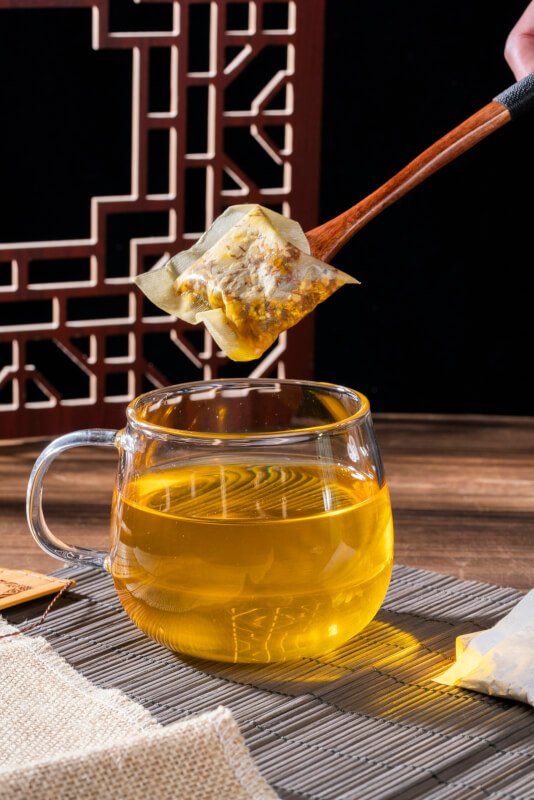
Choosing the Right Tea
When it comes to choosing the right tea, one of the most important factors to consider is the flavor profile. Tea comes in a wide variety of flavors, ranging from light and floral to bold and robust. It’s important to choose a tea that matches your personal taste preferences. If you enjoy delicate and fragrant flavors, opt for teas like Jasmine, Green Tea, or White Tea. For those who prefer a stronger and more robust flavor, Black Tea or Oolong Tea might be the perfect choice.
Another consideration when selecting tea is whether to use loose leaf teas or tea bags. While tea bags are convenient, they often contain lower quality tea leaves that are crushed into smaller pieces. On the other hand, loose leaf teas are made from whole tea leaves, which results in a more flavorful and aromatic cup of tea. By choosing loose leaf teas, you can enjoy an enhanced tea-drinking experience with a richer flavor profile.
If you’re looking to add a touch of natural sweetness to your tea, herbal or floral varieties are a great option. Herbal teas, such as chamomile or peppermint, are made from dried flowers, fruits, or herbs, and they often have a naturally sweet taste. Floral teas, like rose or hibiscus, have a delicate and fragrant flavor that pairs well with honey. By choosing herbal or floral varieties, you can amplify the natural sweetness of your tea and create a delightful and refreshing beverage.
To truly explore the world of tea and honey combinations, don’t be afraid to experiment with different flavor combinations. For example, you can try pairing a fruity herbal tea with a light and floral honey, or a bold black tea with a robust and earthy honey variety. By mixing and matching different flavors, you can discover unique and delicious combinations that suit your taste preferences. So go ahead and let your taste buds guide you on a flavor-filled adventure!
Understanding Honey
When it comes to adding sweetness to your tea, honey is a popular choice. However, not all honey is created equal. Using raw and unfiltered honey is highly recommended as it retains more of its natural nutrients and flavor compared to processed honey. Raw honey is obtained straight from the hive and goes through minimal processing, making it a healthier and more flavorful choice.
There are also different varieties of honey available, each with its own distinct flavor profile. For a light and delicate flavor, consider using clover honey. If you prefer a more robust and earthy taste, opt for wildflower honey. Floral honey varieties like orange blossom or lavender can add a unique and aromatic twist to your tea. By experimenting with different honey varieties, you can discover the perfect flavor combination that enhances your tea-drinking experience.
Different types of honey also vary in sweetness levels, allowing you to adjust the sweetness of your tea to your liking. For a milder sweetness, choose a lighter honey variety. If you prefer a stronger and sweeter flavor, go for a darker honey like buckwheat or chestnut. By selecting the right honey, you can customize your tea’s sweetness and create a perfectly balanced cup that suits your taste preferences.
It’s important to note that overheating honey can affect its flavor and nutritional properties. Honey should never be boiled or microwaved, as high temperatures can break down its enzymes and alter its taste. To preserve the integrity of honey, it is best to add it to your tea once the water has cooled slightly. This way, you can enjoy the full benefits and flavors that honey has to offer.
Preparing the Tea
Properly preparing your tea is crucial to achieving the best flavor and aroma. One essential consideration is water temperature, as different types of tea require different temperature ranges to bring out their optimal flavors. Generally, green and white teas are best brewed with water heated to around 165°F (74°C), while black and herbal teas can be brewed with water at a higher temperature of around 205°F (96°C). Boiling water may scorch delicate teas and result in a bitter taste, while water that is too cool may not extract the full flavor potential of the tea leaves. Using a thermometer or an electric kettle with temperature control can help ensure you achieve the perfect water temperature for your tea.
In addition to water temperature, the amount of tea leaves used is also important. Measuring the right quantity of tea leaves ensures that you achieve a balanced and flavorful cup of tea. As a general guideline, 1 teaspoon (2 grams) of tea leaves is recommended for every 8 ounces (240 ml) of water. However, you can adjust the amount according to your personal preference for a stronger or milder flavor.
To steep loose leaf tea, it is advisable to use a tea infuser or strainer. These tools allow the tea leaves to fully expand and release their flavors while keeping any loose particles contained. Whether you choose a simple metal tea infuser or a more intricate tea strainer, make sure it is large enough to give the tea leaves ample room to infuse properly. This way, you can enjoy a well-infused and flavorful cup of tea without any unwanted debris.
Steeping time is another crucial factor in preparing tea. Each type of tea has an optimal steeping time that allows the flavors to fully develop without becoming bitter or overpowering. Green and white teas generally require a shorter steeping time of around 2-3 minutes, while black and herbal teas usually benefit from a longer steeping time of 4-5 minutes. It is recommended to follow the packaging instructions for steeping times, but feel free to adjust according to your personal taste preferences. Remember that steeping for too long may result in a bitter taste, while too short of a steeping time may result in a weak and underwhelming flavor.
The water to tea ratio is also crucial in determining the strength and flavor of your tea. As a general rule of thumb, a ratio of 1 teaspoon of tea leaves to 8 ounces (240 ml) of water is a good starting point. However, you can adjust this ratio according to your personal taste preferences. If you prefer a stronger tea, you can increase the amount of tea leaves, or vice versa. Ultimately, it’s all about finding the perfect balance that suits your individual taste.
Adding Honey to Tea
Now that you have brewed the perfect cup of tea, it’s time to add a touch of natural sweetness with honey. When adding honey to your tea, it’s best to start with small quantities. This allows you to control the sweetness level and prevent overpowering the flavor of the tea. You can always add more honey if needed, but it’s challenging to reduce the sweetness once it’s added.
Gradually adjusting the amount of honey allows you to customize your tea’s sweetness to your liking. Some teas may require more honey to balance out their natural bitterness, while others may need just a hint of sweetness. By adding honey in small increments and tasting as you go, you can achieve the perfect level of sweetness that complements your tea.
To ensure that the honey dissolves evenly in your tea, stir it gently with a spoon until it is fully incorporated. This will help distribute the sweetness throughout the entire cup, allowing you to enjoy a consistent flavor with every sip. If you prefer a more concentrated sweetness, you can try dissolving the honey in a small amount of warm water before adding it to your tea. This will help the honey mix more easily with the tea, ensuring a smooth and flavorful blend.
Be mindful of the temperature of your tea when adding honey. If the tea is too hot, it may cause the honey to lose some of its natural enzymes and health benefits. It’s best to let the tea cool slightly before adding honey to preserve its nutritional properties. However, if you prefer a warm cup of tea, adding honey while it’s still warm is perfectly acceptable. Ultimately, it’s a matter of personal preference and finding the temperature that brings out the best flavors in your tea and honey combination.
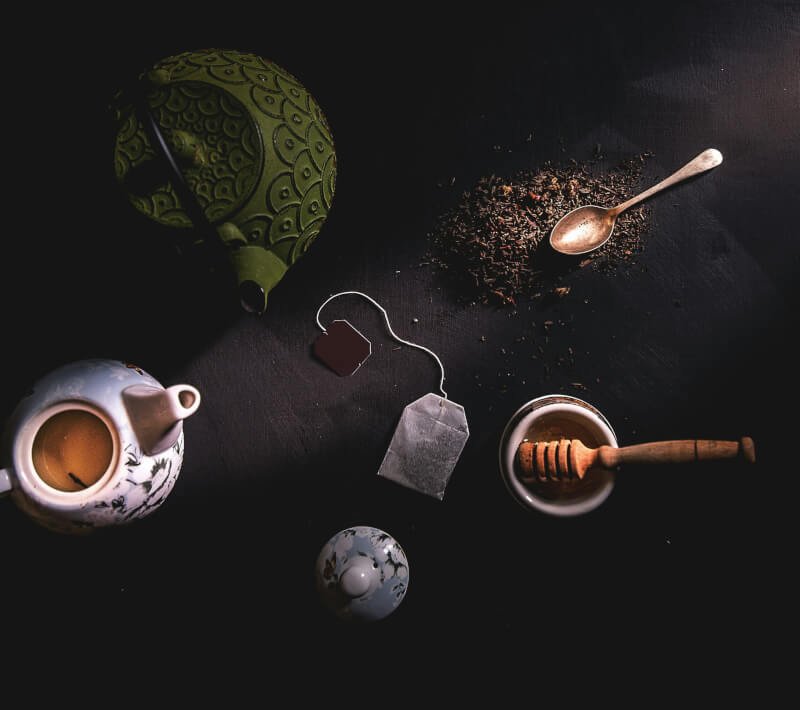
Enhancing the Flavor
To take your tea and honey experience to the next level, consider experimenting with different flavor combinations. Just as certain teas pair well with specific honey varieties, you can also infuse your honey with herbs or spices to create unique and exciting flavors. For example, you can infuse lavender or chamomile into your honey to complement a soothing herbal tea. Or, you can add cinnamon or ginger to your honey for a warm and spicy twist in your black tea. The possibilities are endless, so don’t be afraid to get creative and explore new flavor profiles.
If you’re looking to add a burst of zesty flavor, consider adding citrus zest or juice to your tea. The bright and refreshing notes of lemon, lime, or orange can complement the natural sweetness of honey and add a delightful tang to your cup of tea. Simply grate the zest of your desired citrus fruit and stir it into your tea along with a drizzle of honey. Alternatively, squeeze a few drops of fresh juice into your tea for a burst of citrus flavor. Citrus zest or juice can be a wonderful addition to both hot and iced teas, providing a refreshing and invigorating twist.
For a truly unique and distinctive flavor, try using honeycomb in your tea. Honeycomb is the edible beeswax structure that honey bees create to store their honey. Adding a small piece of honeycomb to your tea can infuse it with a natural and complex sweetness. As the honeycomb slowly dissolves in the hot liquid, it releases its honey, imparting a rich and decadent flavor. You can also enjoy the textural experience of chewing on the honeycomb as you sip your tea. Honeycomb is a great addition to both hot and iced teas, providing a wonderfully unique and indulgent flavor.
Temperature and Timing
Tea can be enjoyed in both hot and iced forms, and each requires a slightly different approach when it comes to brewing with honey. When brewing hot tea with honey, it’s important to avoid boiling the tea with honey already added. Boiling the honey can cause it to lose some of its natural properties and alter its taste. Instead, brew the tea first, allowing it to cool slightly before adding the honey. This way, you can enjoy the full benefits and flavors of both the tea and honey.
Iced tea is a refreshing option, especially on hot summer days. However, when making iced tea with honey, it can be a challenge to ensure that the honey fully dissolves in the cold liquid. To overcome this, you can make a honey syrup by combining equal parts honey and warm water. Stir the mixture well until the honey is completely dissolved. Once the honey syrup is ready, you can easily incorporate it into your iced tea, as the liquid honey has already been dissolved. This ensures a consistent and evenly sweetened iced tea.
When it comes to timing, it can be tempting to immediately add honey to your hot tea. However, it is advisable to allow the tea to cool slightly before adding honey. This is especially important for herbal teas or delicate flavors that may be altered by high temperatures. Allowing the tea to cool for a few minutes not only preserves the integrity of the flavors but also ensures that the honey retains its natural nutrients and health benefits. So, exercise patience and let your tea cool down a bit before enjoying the sweet addition of honey.
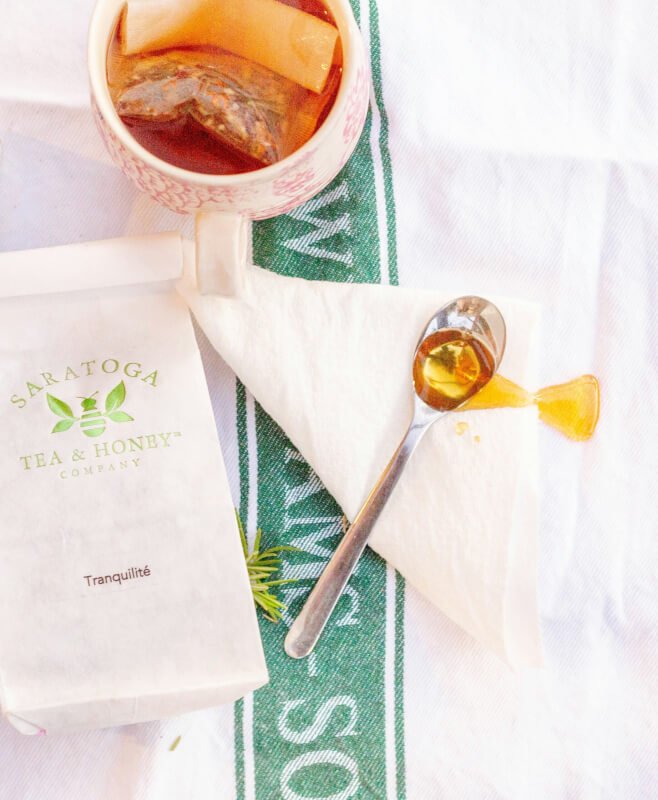
Presentation and Serving
To make your tea experience even more enjoyable, consider paying attention to presentation and serving. Using tea accessories, such as a teapot, tea strainers, or even a tea infuser mug, adds a touch of elegance and sophistication to your tea ritual. These accessories not only enhance the brewing process but also make the act of serving tea a more visually appealing experience. Choose accessories that align with your personal style and taste, and let them elevate your tea-drinking experience.
Another way to enhance the presentation of your tea is through garnishing with natural ingredients. Fresh herbs like mint, basil, or thyme can add a pop of color and freshness to your tea. You can also use edible flowers, such as rose petals or lavender buds, to create a visually stunning cup of tea. These garnishes not only add beauty to your tea but can also infuse subtle flavors that complement the tea and honey combination. Get creative with your garnishes and let them transform your tea into a work of art.
When it comes to serving your tea, the choice of glassware or ceramic cups can make a difference in the overall experience. Glassware allows you to appreciate the color and clarity of your tea, creating a visually enticing presentation. Ceramic cups, on the other hand, provide better insulation, keeping your tea warmer for longer periods. Choose the vessel that suits your preferences and enhances your tea-drinking experience.
Offering a variety of tea sweeteners is a thoughtful gesture when serving tea to others. While honey is a natural and delicious sweetener, some individuals may prefer other options like sugar, agave nectar, or stevia. By providing a selection of sweeteners, you accommodate different tastes and preferences, allowing everyone to enjoy their tea just the way they like it. So, create a tea station filled with various sweeteners, allowing your guests to personalize their cup to their heart’s content.
Experimenting with Tea and Honey Combinations
One of the joys of tea and honey is the opportunity to experiment with different combinations and discover delightful flavor pairings. Here are a few suggestions to get you started:
White Tea and Orange Blossom Honey: The delicate and slightly floral flavor of white tea pairs beautifully with the light and aromatic sweetness of orange blossom honey. This combination creates a subtly sweet and refreshing cup of tea.
Green Tea and Lavender Honey: The grassy notes of green tea complement the gentle floral aroma of lavender honey. The result is a soothing and aromatic blend that is perfect for relaxation.
Black Tea and Wildflower Honey: The bold and robust flavor of black tea stands up well to the rich and earthy taste of wildflower honey. This pairing creates a full-bodied and satisfying cup of tea.
Herbal Tea and Manuka Honey: The naturally sweet flavors of herbal tea, such as chamomile or peppermint, are enhanced by the distinctive and caramel-like taste of Manuka honey. This combination creates a comforting and flavorful tea experience.
Feel free to explore these suggestions or come up with your own unique combinations. The key is to trust your taste buds and have fun in the process. Discovering your favorite tea and honey combinations is an adventure that will elevate your tea-drinking experience.
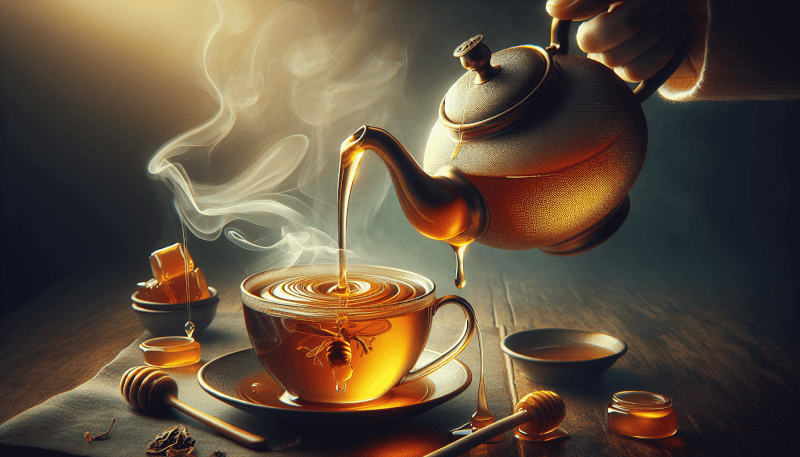
Health Benefits of Tea and Honey
Apart from their delightful flavors, tea and honey also offer numerous health benefits:
Boosting Antioxidant Intake: Tea is rich in antioxidants known as catechins, which can help protect your cells from damage. Honey, especially raw honey, contains antioxidants that can also boost your immune system and provide potential health benefits.
Soothing Sore Throats and Coughs: Herbal teas, often sweetened with honey, have been used for centuries as natural remedies for soothing sore throats and coughs. The antimicrobial properties of honey and the soothing properties of tea can provide relief and comfort during periods of illness.
Promoting Digestive Health: Certain herbal teas, like chamomile or ginger, have been traditionally used to support digestion and relieve digestive discomfort. Adding honey to these teas can further enhance their digestive benefits.
Supporting Healthy Skin: Both tea and honey contain properties that may benefit the skin. Tea’s antioxidants can help protect against free radicals that contribute to skin aging, while honey’s antimicrobial properties can aid in promoting clearer and healthier skin.
While tea and honey offer potential health benefits, it’s important to remember that they should not replace medical advice or treatment. It’s always best to consult with a healthcare professional for specific health concerns or conditions.
Storing Tea and Honey
To maintain the quality and flavor of your tea and honey, proper storage is essential:
Loose Leaf Tea: To keep loose leaf tea fresh, store it in an airtight container away from direct sunlight, heat, moisture, and strong odors. This will help preserve its flavor and prevent it from going stale.
Honey: Honey should be stored in a cool, dry place, away from direct sunlight. Avoid storing honey in the refrigerator, as it can accelerate the crystallization process. Keep the honey tightly sealed to prevent moisture contamination.
Moisture Contamination: Moisture can affect the flavor and quality of both tea and honey. Ensure that your storage containers are completely dry before transferring the tea or honey. Avoid using wet spoons or utensils when handling tea or honey to prevent introducing moisture into the containers.
Optimal Conditions: Ideally, tea should be consumed within a year of purchase to enjoy the freshest flavors. Honey, when stored properly, has an almost indefinite shelf life. However, it’s best to use honey within a year of purchase to ensure its quality and flavor.
By following these storage guidelines, you can enjoy the full potential and flavors of your tea and honey for an extended period.
In conclusion, brewing tea with honey offers a delightful and natural way to add sweetness to your favorite cup. By choosing the right tea, understanding different types of honey, properly preparing your tea, and experimenting with flavor combinations, you can create a truly enjoyable tea-drinking experience. Remember to consider the temperature and timing, pay attention to presentation and serving, and explore the various health benefits that tea and honey offer. So, grab your teacup, sweeten it with a touch of honey, and embark on a journey of flavors that will elevate your tea-drinking experience. Cheers to the perfect blend of tea and honey!
